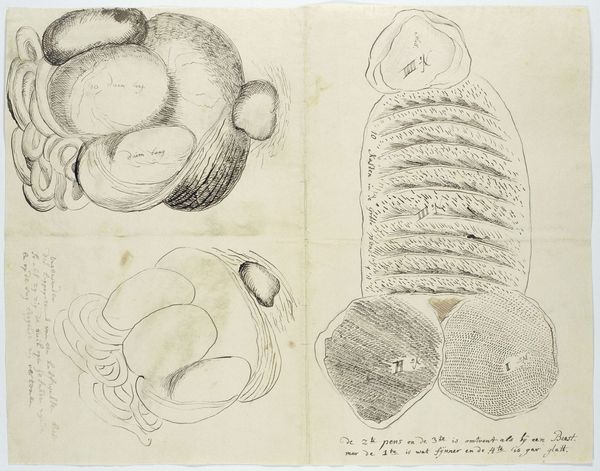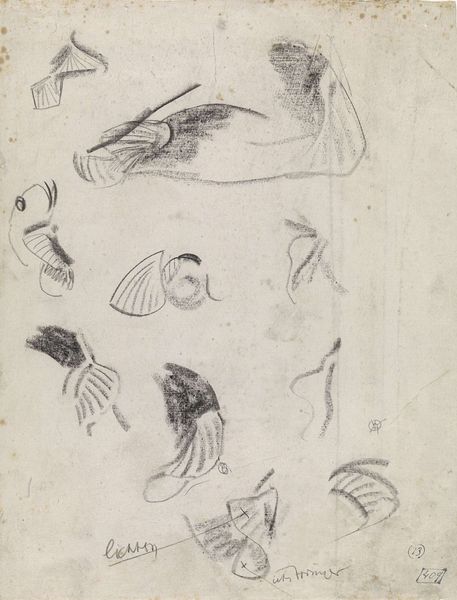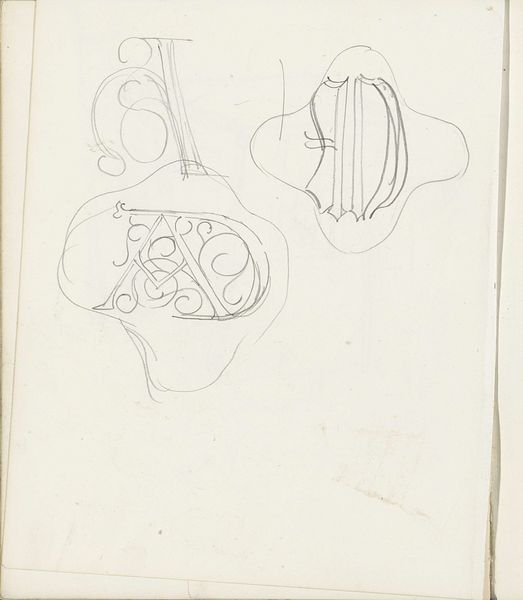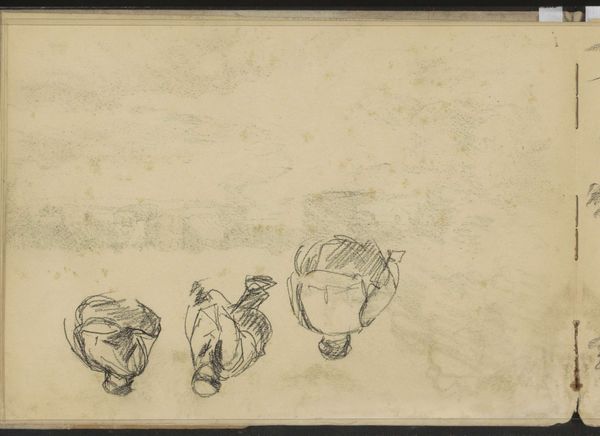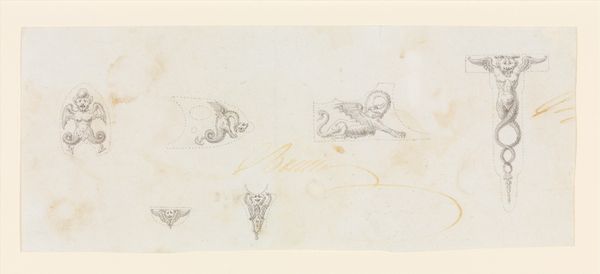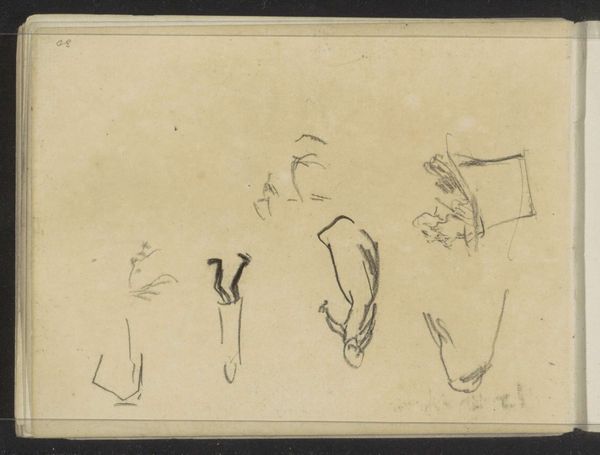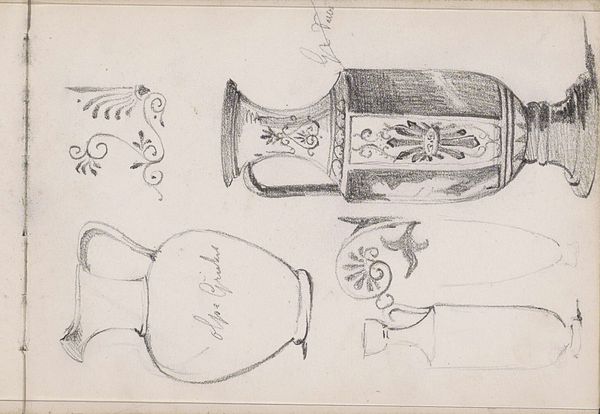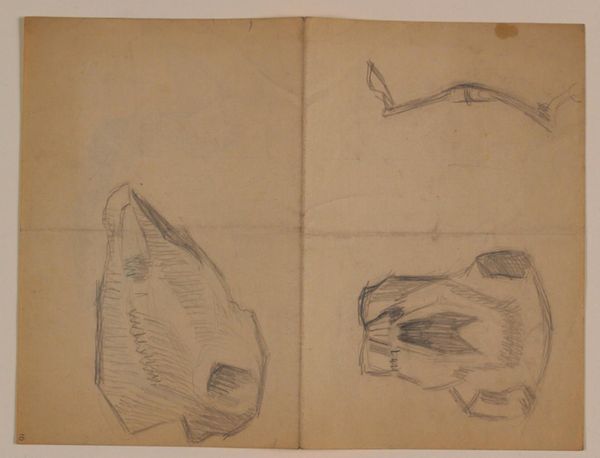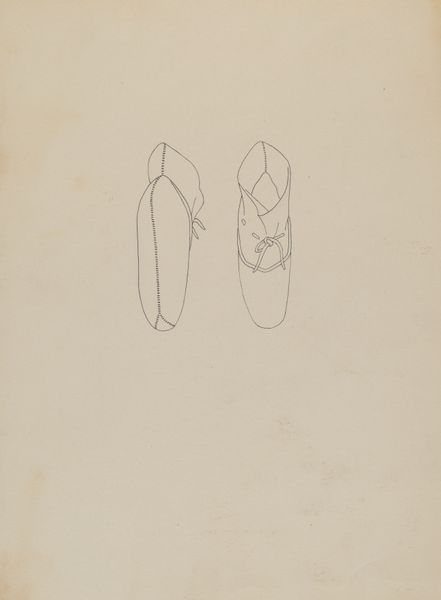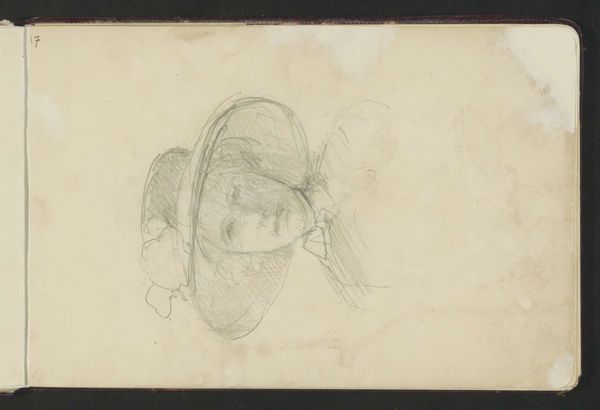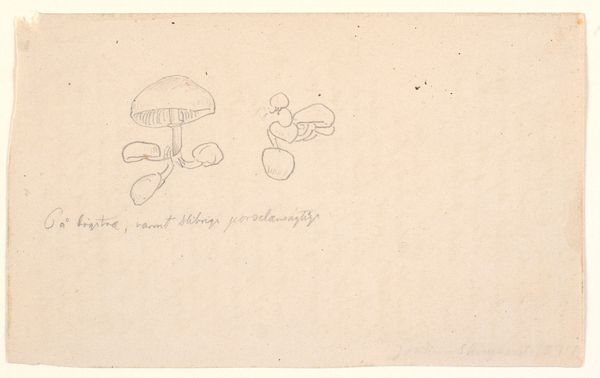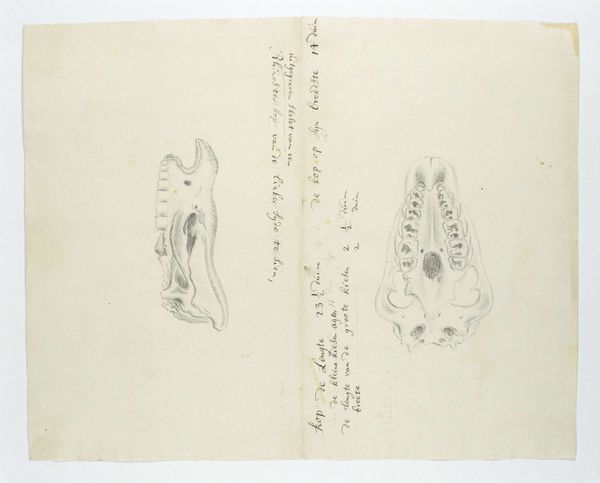
drawing, paper, dry-media, ink, pencil, graphite
#
portrait
#
drawing
#
medieval
#
narrative-art
#
indigenism
#
figuration
#
paper
#
form
#
dry-media
#
personal sketchbook
#
ink
#
geometric
#
pencil
#
line
#
graphite
#
sketchbook drawing
#
academic-art
#
naturalism
#
realism
Dimensions: height 660 mm, width 480 mm, height 528 mm, width 429 mm, height mm, width mm
Copyright: Rijks Museum: Open Domain
Editor: This intriguing drawing, "Diceros bicornis bicornis (Rhinoceros), organs," made after 1789 by Robert Jacob Gordon, appears to be a detailed anatomical study. The sketches, rendered in pencil and ink on paper, almost resemble a page from a scientific journal, but the flowing script gives it an artistic touch. What symbolic significance might we find in Gordon's depiction of these particular organs? Curator: I find it interesting that Gordon isolates these organs. He isn’t just rendering anatomical forms. Each organ possesses a symbolic weight beyond its biological function. Consider the liver, long associated with courage and passion; the kidneys, often linked to subconscious desires and fears. By dissecting the rhino in this way, is Gordon attempting a deeper reading, a search for meaning within the animal's very essence? What stories do these visual representations evoke, do you think? Editor: That’s fascinating! I hadn't considered the potential for these illustrations to function beyond scientific documentation. The fact that he labels each element only adds to the effect. Perhaps, then, these drawings capture a particular moment in time, the burgeoning scientific understanding overlaid with centuries of inherited symbolism. Curator: Precisely! The layering of scientific inquiry and embedded cultural understanding creates a rich and complex image. It is about power and transformation – the organs, symbols of the self are transformed into the other. So, with the indigenous naming of the Rhino alongside, what continuity of knowledge might the artist have wanted to point out? Editor: I see. Looking at it now, it highlights how we, even today, are constantly re-evaluating and layering new meaning onto the world around us, built upon layers of meaning from those before us. Thank you, it really enriches my understanding of how context matters.
Comments
No comments
Be the first to comment and join the conversation on the ultimate creative platform.
